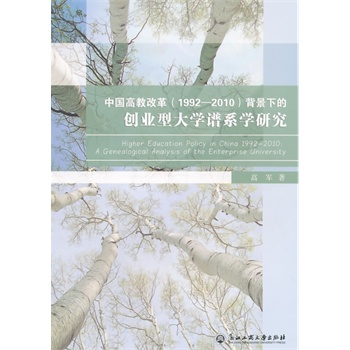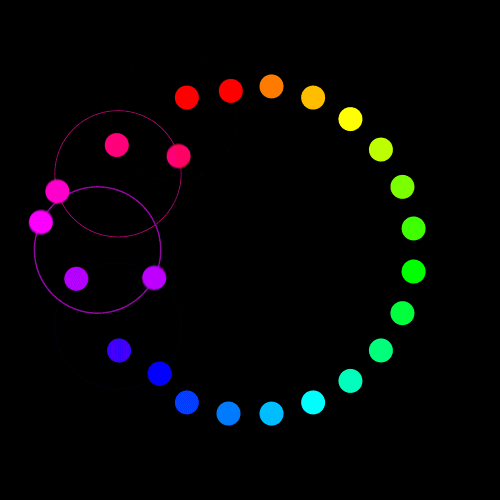
微信扫一扫,移动浏览光盘
简介
本书以福柯提出并由罗斯及米勒发展的治理术(governmentality)为理论框架,采用了谱系学(genealogy)的研究方法,来解构并重构中国高等教育政策(1992-2010),以此来探索在当代中国社会历史背景下出现的新型大学:创业型大学(enterprise university)。
目录
LIST OF FIGURESLIST OF TABLESLIST OF ABBREVIATIONS AND TRANSLATIONS OF CHINESE CONCEPTSACKNOWLEDGEMENTSCHAPTER ONE INTRODUCTION1.1 Background1.2 Research question and aims1.3 Definition of terms1.4 Research design1.5 Significance of the study1.6 Researcher identity1.7 Structure of thesis1.8 Chapter summaryCHAPTER TWO HISTORICAL AND GLOBAL CONTEXT OF HIGHER EDUCATION REFORM IN CHINA2.1 Introduction2.2 Higher education in China: A historical review2.2.1 Higher education in China: Before 19492.2.2 Higher education in China: 1949--19162.2.3 Higher education in China: 1977--19912.2.4 Higher education in China: Since 19922.2.5 Summary2.3 Globalisation and higher education2.3.1 Globalisation2.3.1.1 Three major debates2.3.1.2 The dimensions of globalisation2.3.1.3 International organisations2.3.2 Restructuring of the higher education sector: A global trend2.4 Emergence of the enterprise university2.4.1 Neoliberal policy and the enterprise university2.4.2 The knowledge economy and the enterprise university2.4.3 Academic cultures and the enterprise university2.4.4 Technological developments and the enterprise university2.5 Chapter summaryCHAPTER THREE THEORETICAL FRAMEWORK3.1 Introduction3.2 Social imaginaries3.2.1 Castoriadis and studies of social imaginary3.2.2 Recent studies using social imaginary3.3 Governmentality3.3.1 Significance of governmentality3.3.1.1 Foucault and governmentality3.3.1.2 Miller and Rose on governmentality3.3.1.3 Applications of governmentality in Western contexts3.3.1.4 Recent development of governmentality studies3.3.2 Key concepts: Power, government, subjectivity and space3.3.2.1 Power3.3.2.2 Government3.3.2.3 Subjectivity3.3.2.4 Space3.3.3 Governmentality and social imaginary3.3.4 Applications of governmentality in the context of China3.4 Chapter summaryCHAPTER FOUR METHODOLOGY AND RESEARCH DESIGN4.1 Introduction4.2 Genealogy4.3 Critical policy analysis4.4 Components of the study4.4.1 Constituting the global imaginary of the enterprise university4.4.2 Investigating the national imaginary of contemporary Chinese universities4.4.3 Constituting the imaginaries of contemporary Chinese universities4.5 Chapter summaryCHAPTER FIVE GOVERNMENTAL RATIONALITIES OF HIGHER EDUCATION POLICY IN CHINA5.1 Introduction5.2 The Decision on the Reform of China 's Educational Structure(1985) : Initiator of higher education reform5.2.1 Policy context5.2.2 Rationalities of the 1985 Decision5.2.3 Technologies of the 1985 Decision5.3 Governmental rationalities of China's higher education policy (1992--2010)5.3.1 Knowledge of the objects of government5.3.1.1 International competition5.3.1.2 The introduction of the socialist market economy5.3.1.3 Knowledge economy5.3.1.4 Human capital5.3.1.5 A xiaokang society5.3.2 Morality of authorities5.3.2.1 Morality of the CCP Committee5.3.2.2 Morality of the government5.3.2.3 Morality of the Ministry of Education5.3.3 Language of representation5.3.3.1 Discourses of globalisation5.3.3.2 Socialist discourses5.4 Chapter summaryCHAPTER SIX GOVERNMENTAL TECHNOLOGIES OF HIGHER EDUCATION POLICY IN CHINA6.1 Introduction6.2 Mechanisms and strategies6.2.1 Macro-regulation of the government6.2.1.1 Reform of administration and transformation of government functions6.2.1.2 Appropriation of funds and legislation6.2.1.3 Diversified provision of higher education6.2.1.4 Supervision6.2.1.5 Educational equity and justice6.2.1.6 Tracking and monitoring the policy implementation process6.2.2 Measures of university self-development6.2.2.1 Independent fund-raising by the university6.2.2.2 Quality and efficiency: Competitiveness and prestige6.2.2.3 Rencai selection, cultivation and distribution6.2.2.4 Construction of university infrastructure6.2.2.5 Moral education6.3 Subjectivities and spaces6.3.1 Autonomous and entrepreneurial subjects6.3.2 Obedient subjects6.3.3 New discursive and physical spaces6.4 Chapter summaryCHAPTER SEVEN CONCLUSION7.1 Introduction7.2 The practice of critique7.3 Global imaginary of the enterprise university7.4 Critical analysis of China's higher education policy at a national level7.5 Significance and implications7.6 Limitations of the study7.7 Suggestions for further research7.8 Concluding remarksREFERENCESAPPENDIX LANGUAGE TRANSLATION PROCESS AND SAMPLE
中国高教改革背景下的创业型大学谱系学研究
- 名称
- 类型
- 大小
光盘服务联系方式: 020-38250260 客服QQ:4006604884
云图客服:
用户发送的提问,这种方式就需要有位在线客服来回答用户的问题,这种 就属于对话式的,问题是这种提问是否需要用户登录才能提问
Video Player
×
Audio Player
×
pdf Player
×


